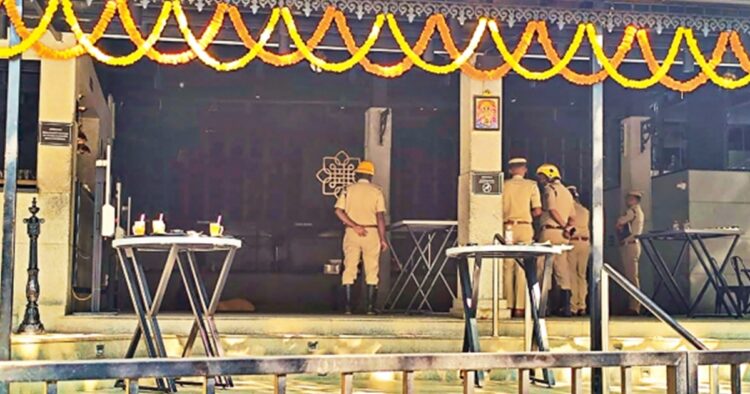A key suspect has emerged in the investigation of the blast at Rameshwaram Cafe, occurring around 12.56 pm on Friday. CCTV footage captured a man wearing a cap, glasses, and a mask, whose identity remains unknown as efforts are underway to identify him. The suspect, who partially concealed his face, was seen entering the restaurant and having a snack before leaving. The blast, which resulted in nine injuries, was contained to the area where a tiffin box bag, left near the hand-wash area, contained an improvised explosive device (IED).
Preliminary investigations suggest the IED utilized a filament from a bulb heated by a digital timer as a detonator. This method bears similarities to a device involved in an earlier incident in Mangaluru, where an alleged Islamic State (IS) operative, Mohammed Shariq, was arrested after sustaining burn injuries from an accidental explosion. While similarities exist between the two incidents, differences in the explosives used indicate potential variations in the perpetrators’ methods.
The explosive material used in the Rameshwaram Cafe blast is yet to be identified, although it appears to be a low-intensity device constructed from readily available materials. The blast is being treated as a terrorist incident, with authorities invoking sections of the Unlawful Activities (Prevention) Act of 1967 and the Explosives Substances Act. The National Investigation Agency (NIA) is expected to assume control of the investigation, given its expertise in handling cases of this nature.
In the previous Mangaluru incident, Mohammed Shariq, along with associates, had constructed an IED using gunpowder as the main explosive component. Shariq, known for his alleged links to the IS, had previously been involved in anti-national activities, including graffiti vandalism. The group reportedly learned bomb-making techniques from online sources, highlighting the accessibility of such information.
The similarities between the Rameshwaram Cafe blast and the Mangaluru incident underscore concerns regarding the presence of self-taught individuals radicalized by extremist ideologies. While law enforcement agencies have made strides in apprehending suspects linked to these incidents, the threat posed by lone actors or small cells remains a significant challenge. Efforts to counter radicalization and prevent such incidents must continue to be a priority for authorities.
As the investigation progresses, authorities are urging vigilance among the public and enhancing security measures to mitigate the risk of further attacks. The collaboration between local law enforcement agencies and federal authorities, such as the NIA, underscores the seriousness with which such incidents are being addressed. In the wake of these events, communities are coming together to condemn violence and promote unity against extremist ideologies, emphasizing the importance of collective efforts in safeguarding society against terrorism.

















Comments